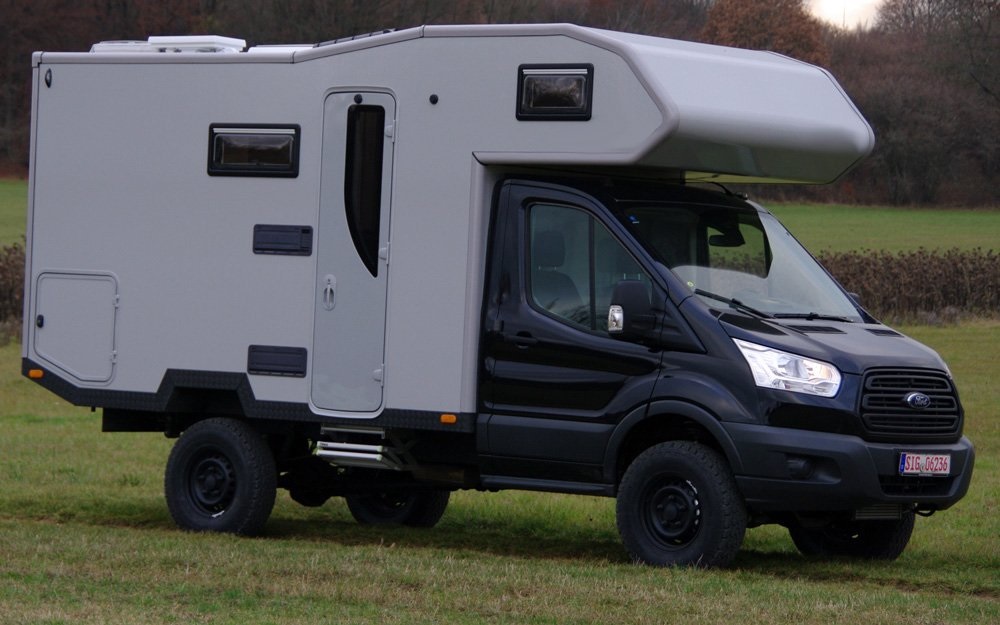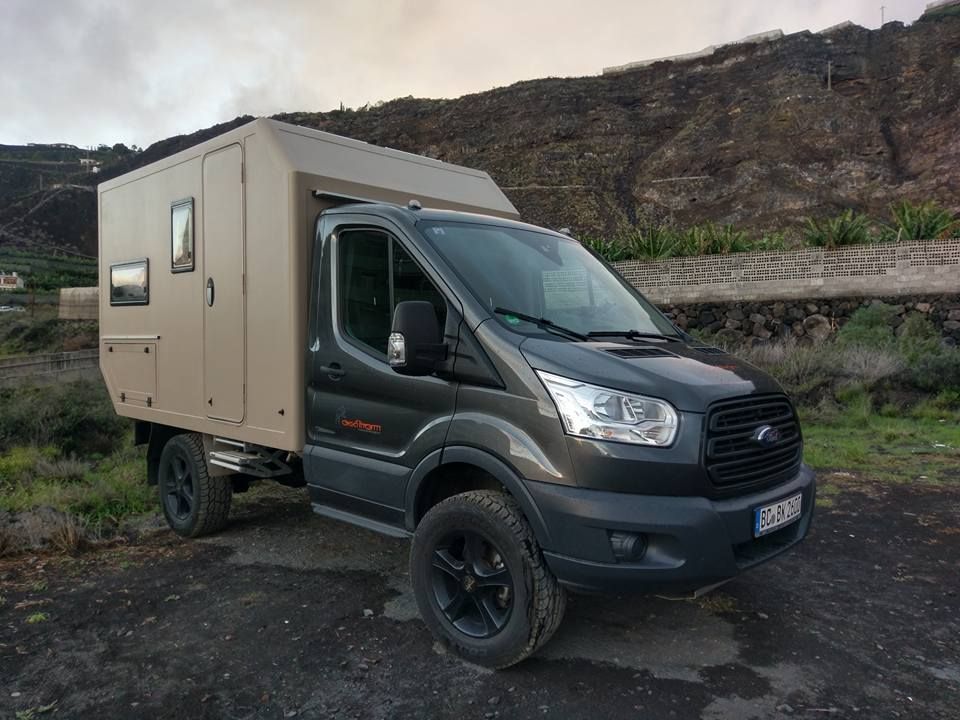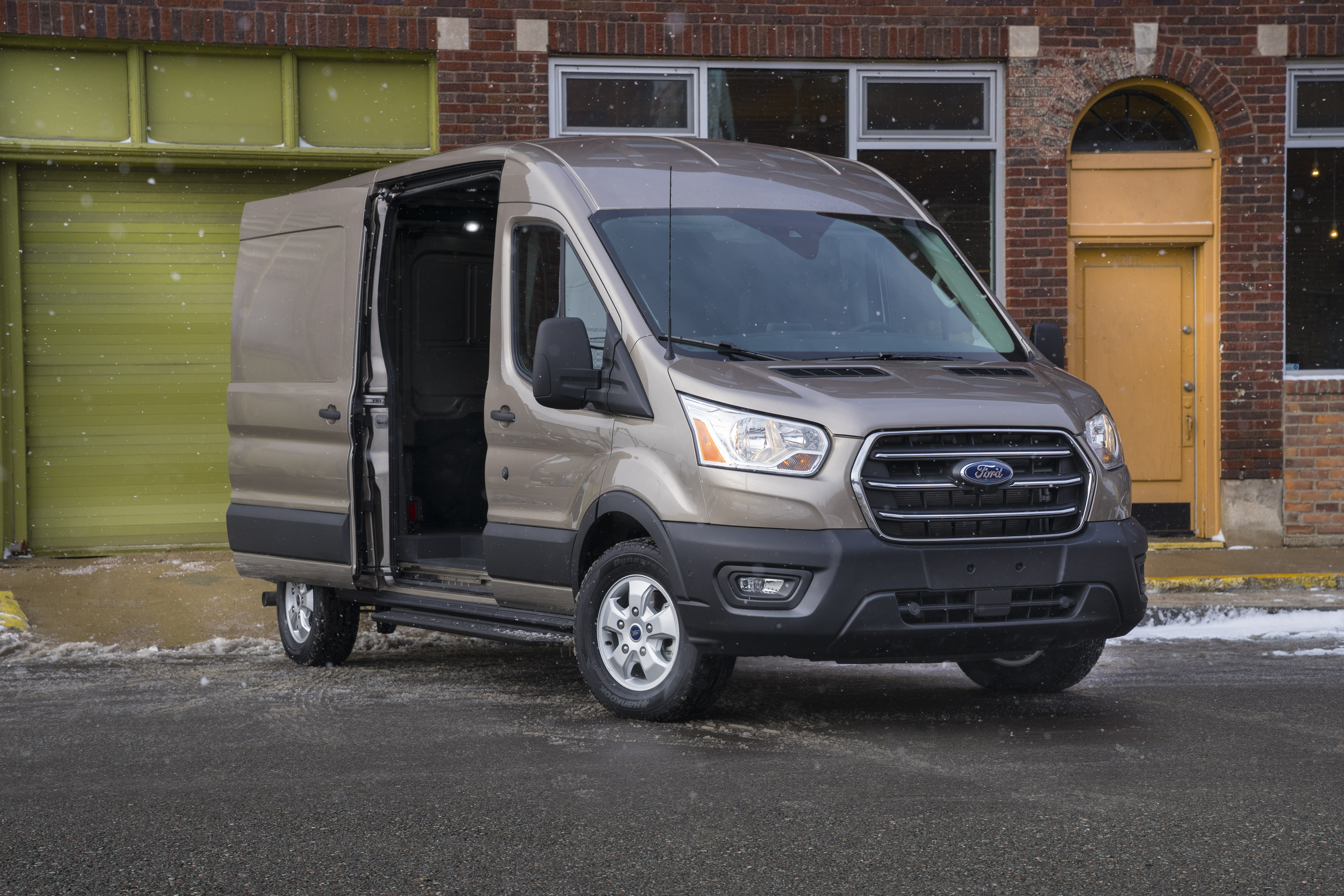For the last five years, the Mercedes Sprinter has quite literally revolutionized the backcountry RV market, upending longtime offerings like the Ford E350. The popularity of the Sprinter was so extreme that inventory backlogs extended into the next model year, and industry leaders like Sportsmobile were ordering 100 units at a time (the most that MBUSA would allow). The success made sense, as the new Sprinter drove easier on the road, was quieter, and provided far better fuel economy. With that success came the ire of other manufacturers and an explosion in aftermarket 4WD conversions for the Transit and the Nissan NV series. Even 2WD Sprinters were being converted by companies like Iglhaut Allrad, which included proper low range and front/rear locking differentials. This week, Ford starts taking orders for the new 2020 AWD Transit, and dealerships have been given access to order forms. For everyone who has been looking forward to buying the new Transit, now is the time.


Images courtesy Extrem Fahrzeuge, Germany
My first experience with a Transit was during my 2016 adventure in South America, where part of my travel group used a Quigly converted Ford Transit high roof to drive to Ushuaia. It worked extremely well, and showed what was possible with the popular Ford offering. I have also been fortunate to drive the Sprinter on a few continents and in some remote terrain.

The Transit is also available as a cab-chassis, which allows for the installation of an expedition camper or flatbed.
As an Overland Van
As anticipated, Ford watched the market and has responded with the 2020 AWD Transit, a 4×4 system that employs an infinitely-variable electronically-controlled center differential , which can send up to 100 percent of the available torque to the front axle. This is where the Transit deviates from the Sprinter, which can be specified with an optional low range transfer case. An available low range is an advantage to the Sprinter, as it allows slower overall speeds and greater control in more technical terrain, but the reduction ratio is only 1.42:1, which is far less than most traditional 4WDs. As a result, the perceived advantage is less than reality, and it comes down to math (sorry). The Ford 10-speed has a first gear of 4.7:1, while the Sprinter 7-speed has a 4.377:1. The axle ratio of both can be specified to 4.1:1. The lowest overall ratio available in the Transit is 19.3:1, while the Sprinter with low range sits at 25.20:1. Add in the difference in available torque from the bi-turbo EcoBlue and… the low range of the Sprinter is not quite as magic as first brush reveals.
Endless ideas with the Transit, including a (very) long wheelbase tray bed ute
When it comes to other trail performance considerations, the Sprinter often still has the advantage, particularly when stock ground clearance is compared. The Sprinter has almost two more inches of clearance at the lowest point, but that is not intended to be praise for the Sprinter either at 7.9 inches total. Both vans will need to be lifted to allow larger tires and additional clearance for anything beyond an improved dirt track, muddy road, or snow-covered parking lot. Fortunately, options for lifting both of these vans is available from many aftermarket sources.

Iglhaut Allrad Converted Mercedes Sprinter shown for comparison. Image Overland Journal
The road performance of the Ford will be better overall, with three additional transmission gears and more HP/Torque than the Sprinter. In fact, the new 2.0-liter EcoBlue bi-turbo I4 diesel option for the Transit is the same engine as spec’ed to the international Ranger Raptor. Hopefully that is an indicator of things to come in the Ford truck division. Other considerations is the available dual 250-amp alternators for the Ford, which will expedite house battery charging, and support winching, larger air compressors.


Conclusions
Based on my time in the field with the two vehicles, including 2WD and 4WD converted Transits, it leads me to conclude that the Sprinter will have a slight advantage off-road, while the Transit will have a notable advantage on pavement. Principally, the Ford is ground clearance challenged, a byproduct of their design allowing the lowest possible load and ingress/egress height. Given Mercedes declining reliability and Fords increasing quality rankings. Ford is actually the fourth highest J.D. Power ranked brand, and the best for any domestic manufacturer. Mercedes-Benz, is tragically below average and reports from Sprinter owners reflect this. Given all this, will the new 2020 Ford Transit unseat the Sprinter as the van life Instagram favorite? In many ways, I think it will, particularly in sales volume. The ultimate success of the Transit will depend on how the aftermarket responds, because we all want our overland rig to have more ground clearance than a Toyota Avalon. Ford.com
Comparison: Sprinter 4WD vs Transit AWD
Base Price: $55,600 | TBD
Wheelbase: 144 inches | 148 inches
Ground Clearance: 7.9 inches | 6.1 inches
Payload 3500: 5,320 lbs. | 4,570 lbs. (est.)
Towing: 7,500 lbs. | 7,600 (est.)
Fuel Capacity: 24.5 Gallons | 25 Gallons
Transmission: 7-speeds | 10-speeds
Low Range: 1.42:1 | N/A
Engine: 3.0L Diesel | 2.0L Diesel
Horsepower: 188 hp | 210 hp (est.)
Torque: 325 lb-ft | 369 lb-ft (est.)



